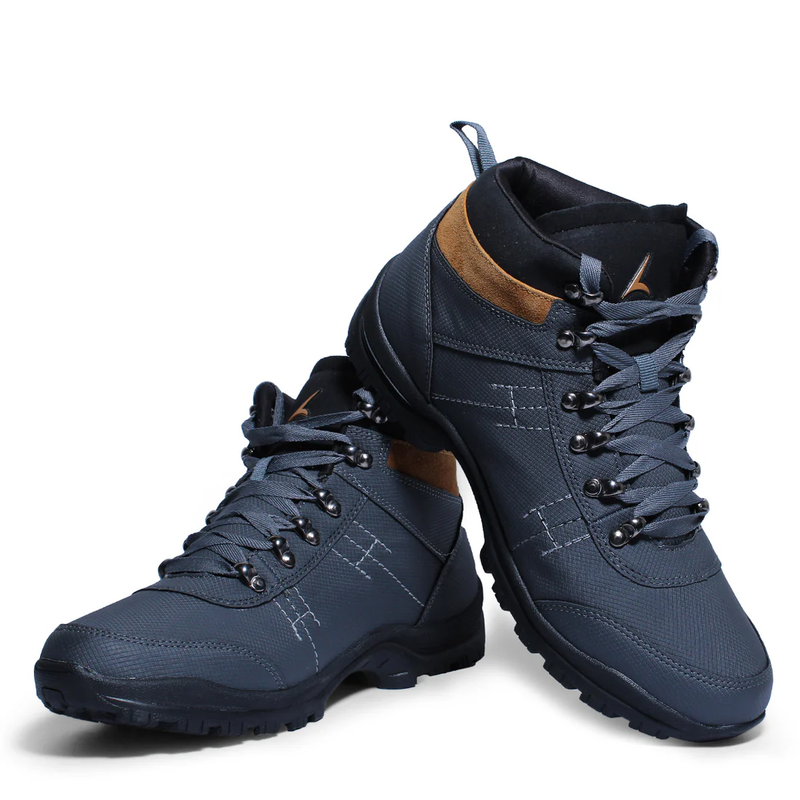Why Choosing the Right Hiking Shoes is Important
Selecting the right hiking shoes is crucial for a comfortable and safe hiking experience. Poorly chosen shoes can cause blisters, pain, or even long-term foot injuries. Hiking shoes are designed to provide support, stability, and protection on various terrains. They also ensure your feet stay dry and comfortable under different weather conditions.
Proper hiking shoes improve traction, reducing the risk of slips and falls. They also help distribute weight evenly, making it easier to carry backpacks on long trails. Investing in the right hiking shoes can significantly enhance your performance and enjoyment outdoors. Choosing wisely will save you from discomfort and unnecessary strain during your hikes.
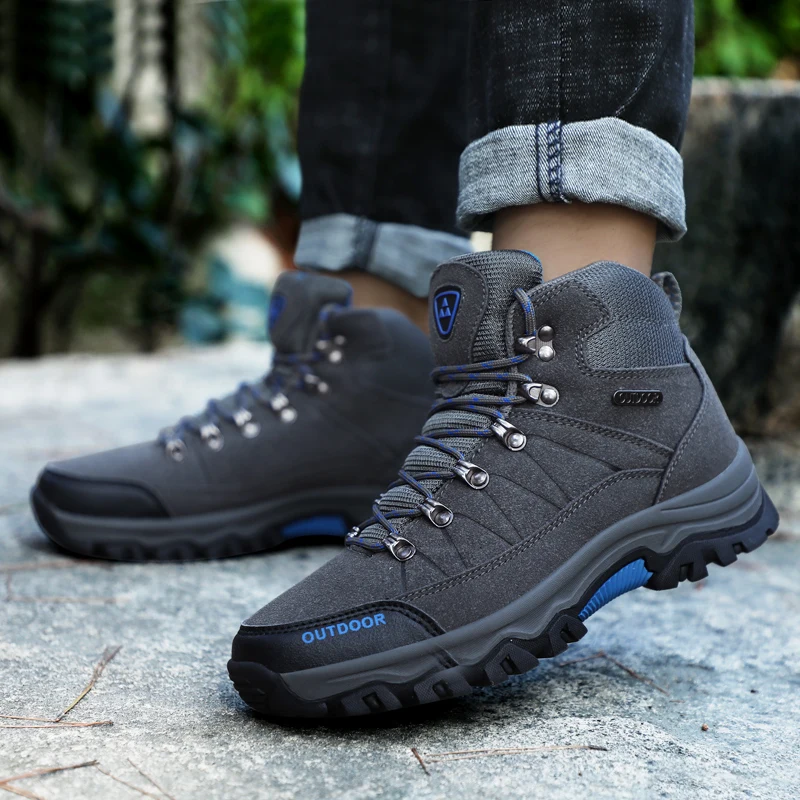
Types of Hiking Shoes
Choosing the right type of hiking shoes is essential for comfort and safety. Different types of hiking shoes are designed for specific activities, terrains, and loads. Understanding the features and uses of each type will help you make the best choice.
Lightweight Hiking Shoes
Lightweight hiking shoes are great for day hikes and easy trails. They are built for speed and agility, offering minimal support but maximum flexibility. These shoes are often made with breathable materials, keeping your feet cool and dry. Lightweight shoes are ideal for hikers carrying little to no gear. They work well on flat terrain and are perfect for short, less demanding hikes.
Midweight Hiking Boots
Midweight hiking boots provide more support than lightweight shoes. They are suitable for longer hikes and moderate terrains. These boots offer better cushioning and ankle support, making them great for carrying heavier loads. Many midweight boots include waterproofing features to handle wet conditions. They strike a balance between durability and comfort, making them versatile for various hiking trails.
Heavyweight Backpacking Boots
Heavyweight backpacking boots are built for rugged trails and carrying heavy backpacks. These boots are made with durable materials to withstand challenging terrains like rocky paths. They feature thick soles and sturdy construction for maximum support and protection. Heavyweight boots often come with enhanced waterproofing for extreme conditions. These are ideal for multi-day hikes and high-altitude expeditions where stability is crucial.
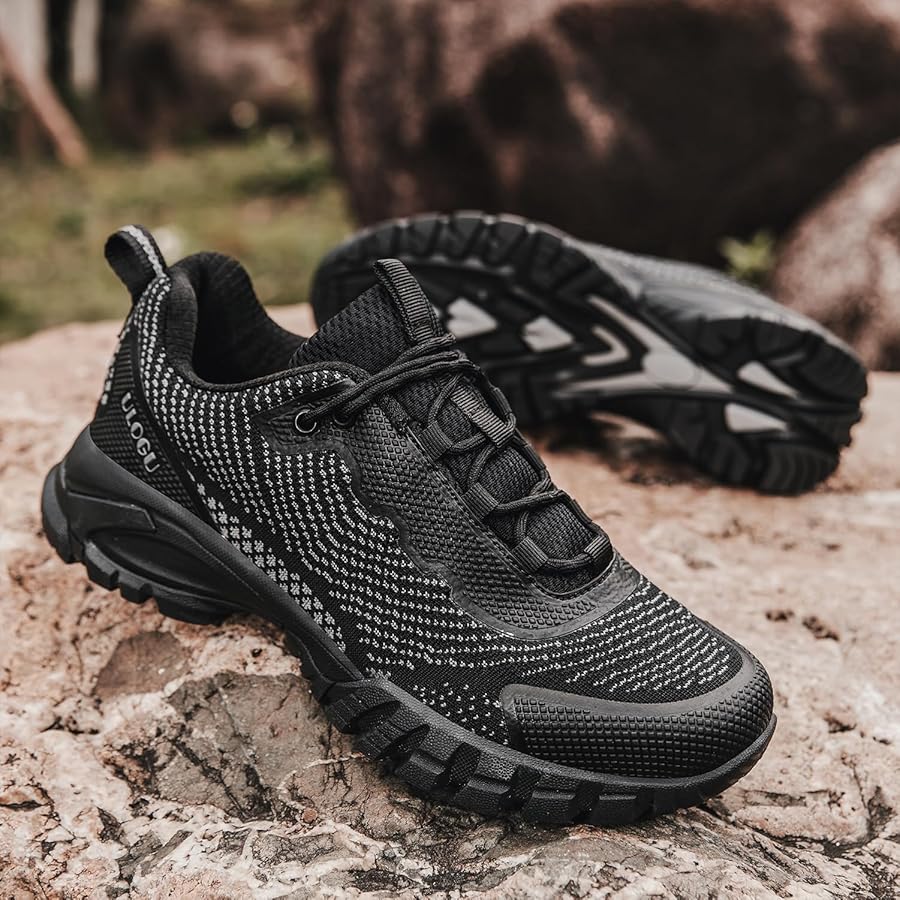
Key Features to Look for in Hiking Shoe
Selecting hiking shoes with the right features ensures safety, comfort, and durability on the trail. Let’s explore the essential aspects to look for when buying hiking shoes.
Material and Durability
The material impacts the durability and weight of hiking shoes. Leather is long-lasting and offers great protection but can be heavy. Synthetic materials like nylon and polyester are lightweight and dry faster but might wear out sooner. Choose durable materials based on your hiking needs and terrain.
Waterproofing and Breathability
Waterproof shoes keep your feet dry during wet weather or muddy trails. However, they may trap heat and moisture, leading to discomfort. Breathable shoes allow airflow, keeping your feet cool, but are less effective against water. For all-around performance, consider shoes with a combination of both features.
Sole and Traction
The sole determines grip and stability on varying terrains. Look for shoes with sturdy rubber soles that offer excellent traction. Deep lugs on the soles help prevent slips on uneven or slippery surfaces. A good sole ensures you stay stable, even on rocky or muddy paths.
Fit and Comfort
An ideal hiking shoe should fit snugly but not feel tight. Poor fit can cause blisters, pain, or toe injuries. Look for shoes with cushioned insoles and adequate arch support for lasting comfort. Ensure there’s enough space at the toe box for natural movement. Always try on shoes before buying to ensure the right fit.
When choosing hiking shoes, prioritize features like durability, breathability, traction, and comfort. These factors ensure a better hiking experience and reduce the risk of injuries.
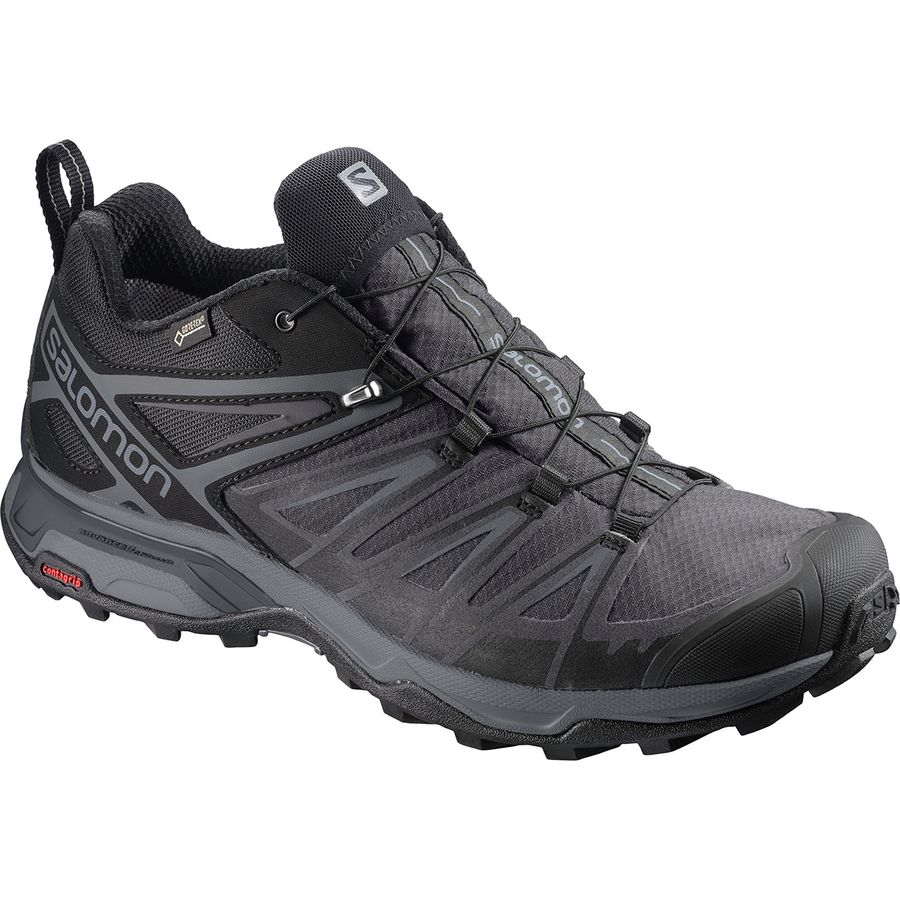
How to Choose Based on Terrain and Weather
Choosing hiking shoes based on terrain and weather ensures comfort and safety on your adventure. Different conditions require specific designs and features for optimal performance. Here’s how to pick the right hiking shoes for varying environments.
Hiking on Rocky Trails
Rocky trails demand sturdy and supportive hiking shoes. Opt for shoes or boots with tough materials that resist wear and tear. Look for reinforced toe caps to protect your feet against sharp rocks. A thick rubber sole with deep lugs ensures traction on uneven surfaces. Consider midweight or heavyweight boots to provide extra padding and ankle protection. Ensure a snug fit to prevent foot movement on tough trails.
Wet or Muddy Conditions
Wet and muddy trails call for waterproof shoes to keep your feet dry. Select shoes with Gore-Tex liners or similar waterproof materials. These help block out water while maintaining breathability. Soles with excellent grip prevent slipping on wet terrain. Avoid shoes that are too breathable, as they might allow water to seep in. Midweight boots work best, offering stability and water resistance. Cleaning your shoes regularly ensures better performance in damp conditions.
Hot and Dry Climates
For hot and dry climates, prioritize breathable hiking shoes. Lightweight hiking shoes with mesh uppers allow airflow and keep feet cool. Avoid waterproof materials as they trap heat and moisture. Thin soles with moderate traction work well on sandy or dry surfaces. Lightweight designs provide comfort and flexibility on less demanding trails. Look for shoes with moisture-wicking insoles to manage sweat effectively. Ensure the shoes offer enough support for long hikes in arid environments.
Adjust your choice of hiking shoes based on the trail and weather to maximize comfort and durability.
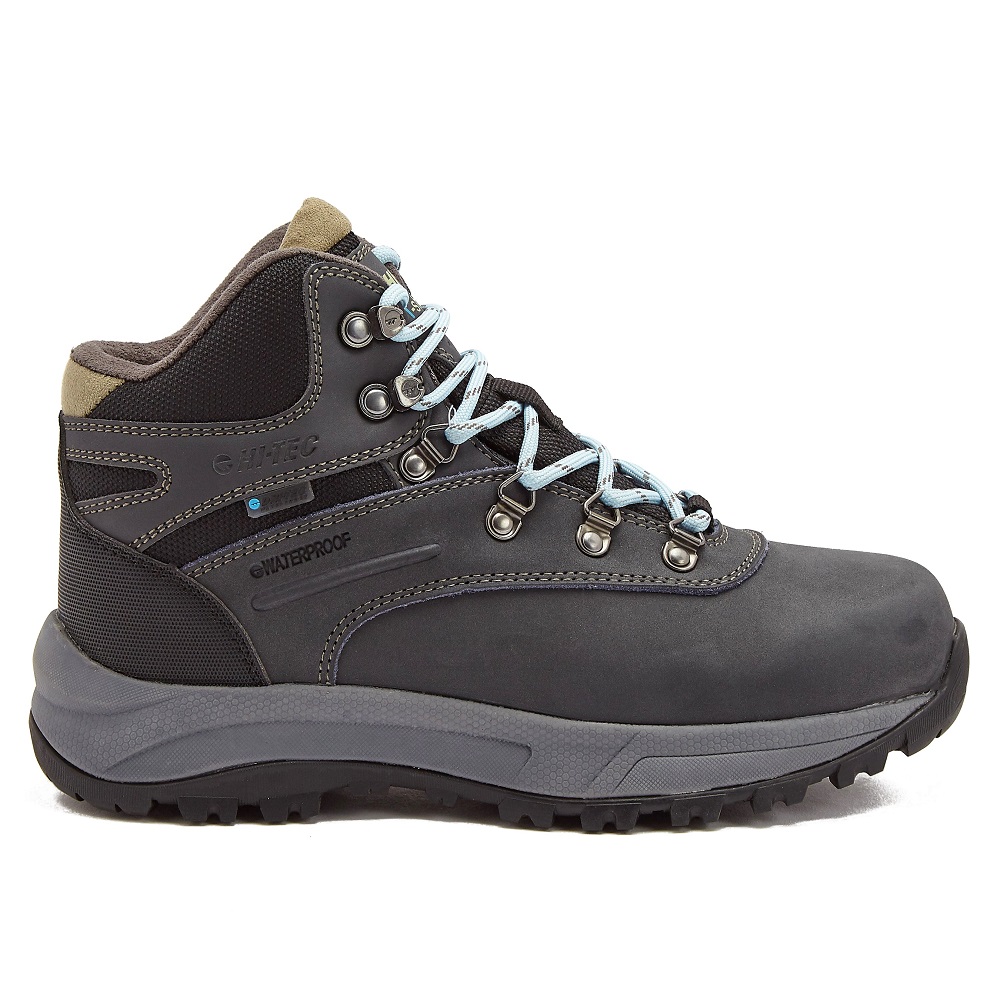
Tips for Proper Sizing and Fit
Ensuring the correct size and fit for your hiking shoes is critical for comfort and safety. Ill-fitting shoes can cause blisters, discomfort, and even long-term foot injuries. Here’s how to guarantee the best fit for your adventure.
How to Measure Your Feet
Proper measurement is the first step to finding the perfect fit. Follow these steps:
- Measure in the Evening: Feet tend to swell throughout the day. Evening measurements are most accurate.
- Wear Hiking Socks: Use the socks you plan to wear during hikes for a precise fit.
- Use a Measuring Tool: A foot measurement tool or ruler offers accurate results. Place your foot flat.
- Check Length and Width: Note both dimensions. Wide feet may need broader shoes.
- Test With Insoles: Include insoles if you will use them during hikes to ensure the right fit.
Always compare measurements with sizing charts provided by the shoe brand.
Common Fit Issues and How to Avoid Them
Understanding potential fit problems helps you choose better shoes and avoid discomfort:
- Blisters: Shoes too tight or rubbing cause blisters. Look for snug but flexible designs.
- Toe Pinching: Tight toe boxes lead to pain. Ensure enough space for natural movement.
- Heel Slipping: Loose heels cause friction. Verify secure ankle and heel fit.
- Arch Pain: Lack of support strains arches. Pick shoes with cushioned and supportive insoles.
- Incorrect Sizes: Too big or small shoes affect stability. Test multiple sizes before choosing.
To avoid these problems, try shoes in-store and walk around to check fit under real conditions. Double-check fit when ordering online based on brand-specific charts.
Selecting properly fitting hiking shoes guarantees comfort and safety during your hikes. Be thorough in measuring and testing fit!
Breaking in Your Hiking Shoe
Properly breaking in your hiking shoes is key to comfort on the trail. New hiking shoes can be stiff, potentially causing blisters or discomfort. Breaking them in ensures they conform to your feet, providing better support and fit.
Why Break-in is Necessary
Breaking in hiking shoes reduces the risk of pain and blisters during hikes. Stiff materials in new shoes need softening to prevent pressure points. Molding the shoes to your feet improves their performance, especially on long hikes. Without breaking in, discomfort might limit your hiking experience. This process extends the life of the shoes by improving their flexibility.
Steps to Break-in Effectively
- Wear Shoes at Home: Begin by wearing your hiking shoes indoors for short periods.
- Use Hiking Socks: Pair your shoes with the socks you’ll use on the trek.
- Take Short Walks: Gradually increase distance by walking around the neighborhood or on easy trails.
- Flex the Shoes: Bend and twist the shoes gently to soften them.
- Increase Intensity: Progress to uneven terrains to complete the break-in process.
- Prevent Blisters: Apply blister prevention techniques, like wearing liner socks or using anti-chafe products.
Breaking in takes time; don’t rush it. Properly broken-in hiking shoes enhance both comfort and safety on your adventures.
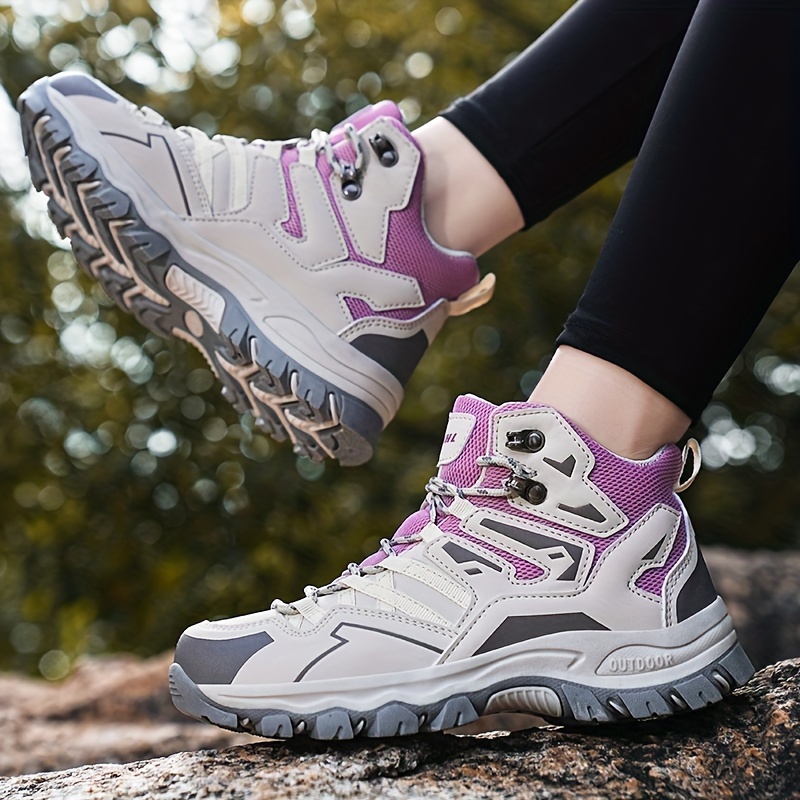
Maintenance and Care for Longevity
Proper maintenance ensures your hiking shoes last longer and perform better. Regular care prevents wear and damage, saving you money on replacements. By following simple maintenance routines, you can keep your hiking shoes in top condition.
Cleaning and Drying
- Remove Dirt Immediately: Brush off mud and debris after every hike to avoid build-up.
- Use Water and Mild Soap: Clean shoes with a cloth or brush using soapy water. Avoid harsh chemicals.
- Dry Shoes Properly: Air dry in a shaded area to prevent damage from direct sunlight.
- Avoid Washing Machines: Machine washing can ruin shoe materials and adhesives. Hand cleaning is safer.
- Check Insoles: Remove and clean insoles separately to avoid trapped moisture inside the shoes.
Keeping your hiking shoes clean and dry maintains their strength and usability over time.
Repair and Resoling Options
- Inspect Regularly: Check for damage like worn soles, loose stitching, or peeling materials.
- Fix Minor Issues Early: Repair small tears with adhesive or tape to prevent them from worsening.
- Replace Soles as Needed: Worn soles reduce traction. Resoling can restore grip and extend shoe life.
- Seek Professional Repairs: For major issues, visit a cobbler experienced in hiking shoe repairs.
- Maintain Waterproof Coating: Reapply waterproof sprays or creams to ensure shoes stay resistant to water.
Regular inspections and timely repairs keep your hiking shoes functional for years of use. Proper care ensures your investment lasts through many adventures.
Common Mistakes to Avoid When Selecting Hiking Shoe
Choosing hiking shoes requires careful thought. Mistakes can lead to discomfort or unsafe conditions on the trail. Here are common errors to avoid:
Neglecting Terrain Compatibility
Many hikers overlook matching shoes to terrain. Lightweight shoes won’t work on rocky trails. Always consider the terrain before choosing. For rugged areas, opt for midweight or heavyweight boots.
Ignoring Weather Conditions
Failing to account for weather can lead to wet or overheated feet. Waterproof shoes are essential for wet conditions. Breathable shoes are better for hot and dry climates. Match the shoe features to the expected weather.
Choosing Style Over Comfort
Prioritizing style over comfort is a common error. Fancy-looking shoes might lack proper support. Focus on fit, comfort, and durability rather than aesthetics.
Skipping the Fit Test
Never buy hiking shoes without testing their fit. Poorly fitting shoes cause blisters and pain. Always try them on wearing hiking socks for an accurate test.
Underestimating Weight and Load
Shoes not built for heavy backpacks can lack support. Lightweight shoes are ideal for short hikes. For carrying gear, midweight or heavyweight boots are better. Match shoe type to hiking load.
Ignoring Maintenance Needs
Some hikers miss the importance of shoe care. Neglecting cleaning or waterproofing reduces performance. Maintain your hiking shoes regularly for longer durability.
Buying Without Research
Impulse buying without researching features leads to poor choices. Study reviews, terrain suitability, and weather compatibility before purchasing. Ensure the brand fits your specific needs.
Avoiding these mistakes ensures comfort, safety, and better performance on your hiking adventures.
Step Forward with Confidence
In summary, selecting the right hiking shoes is critical for any outdoor adventure. By understanding the types of shoes available, their key features, and how to care for them, you can enhance your hiking experience. Whether you are a seasoned hiker or a beginner, investing in quality hiking footwear will ensure comfort, support, and safety during your excursions.
Adventure Awaits
Get ready to step forward on your next adventure, armed with the knowledge needed to select the ideal hiking shoes. Embrace the trails and celebrate the great outdoors with confidence. By choosing the right tools and approaches, you can fully enjoy the experience of hiking.
Prioritize Your Enjoyment
Above all, remember that hiking is about enjoying nature and embracing new experiences. Allow your choice of hiking shoes to contribute to your comfort and confidence. For every step taken on the trail, you build cherished memories and strengthen your connection to the outdoors. So lace up your hiking shoes and prepare to explore the beauty that awaits!
